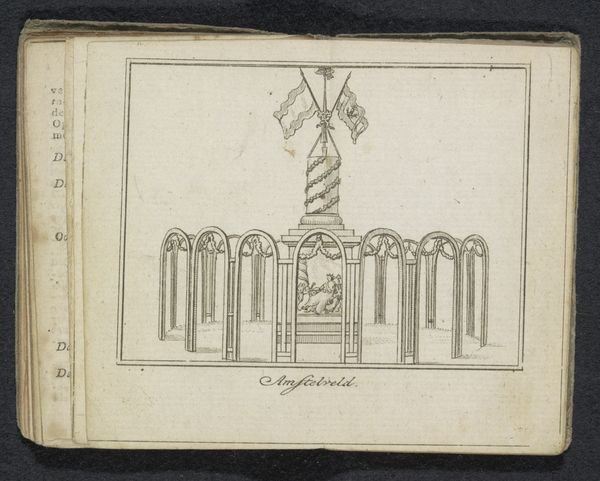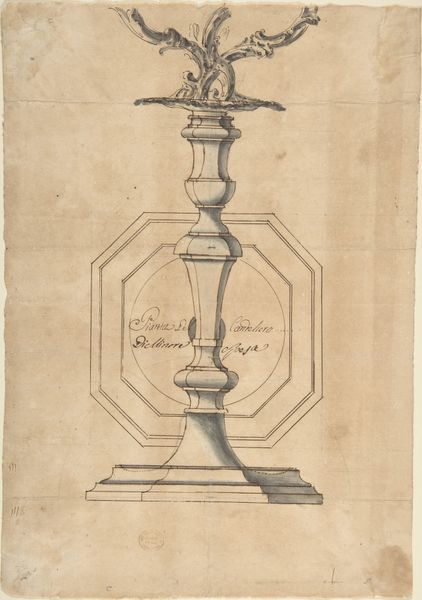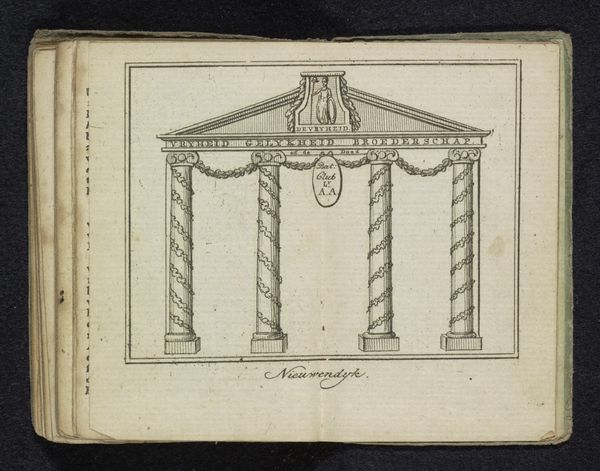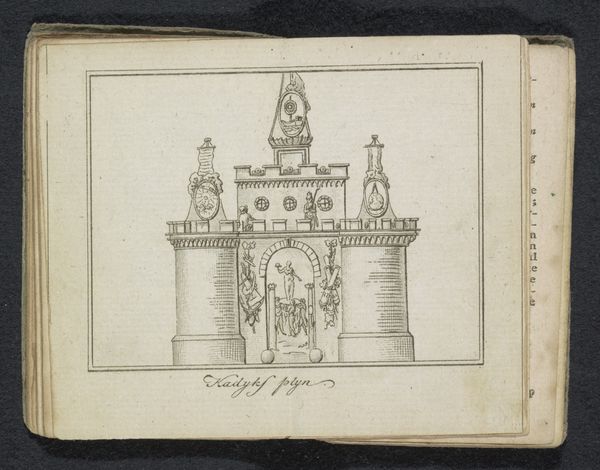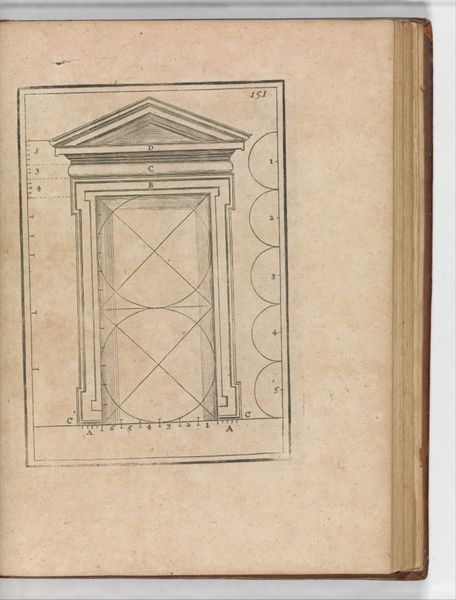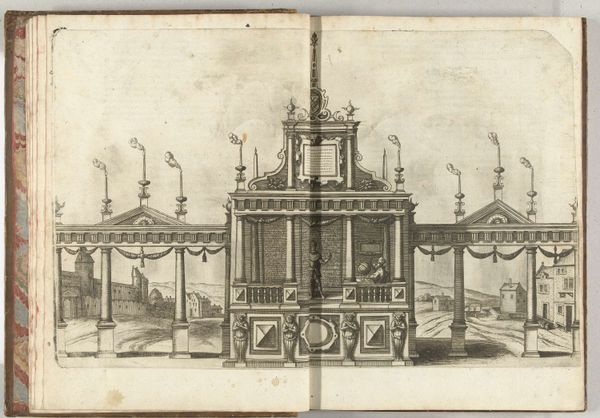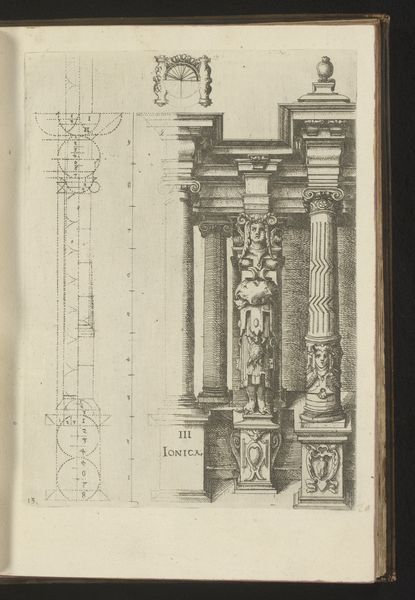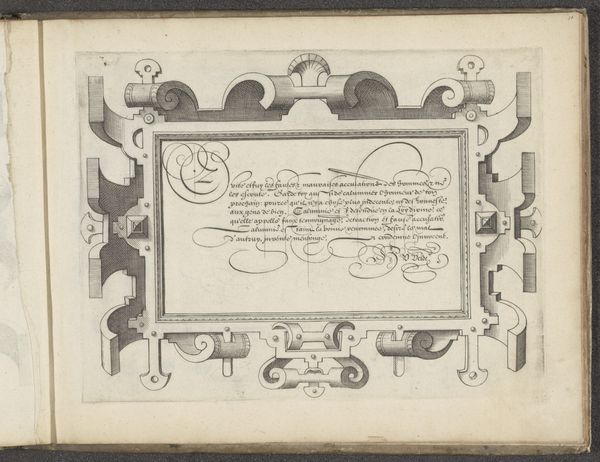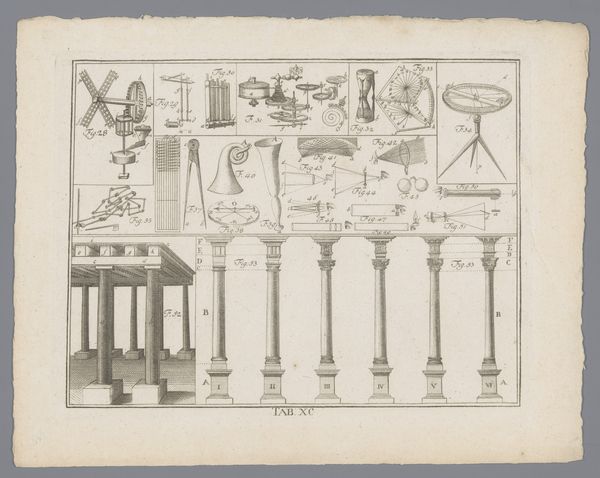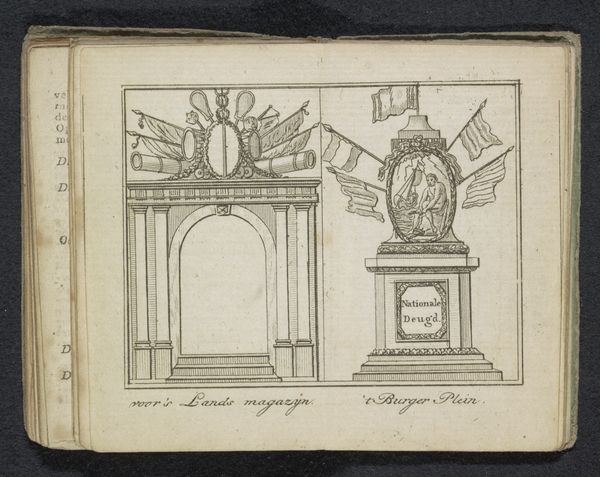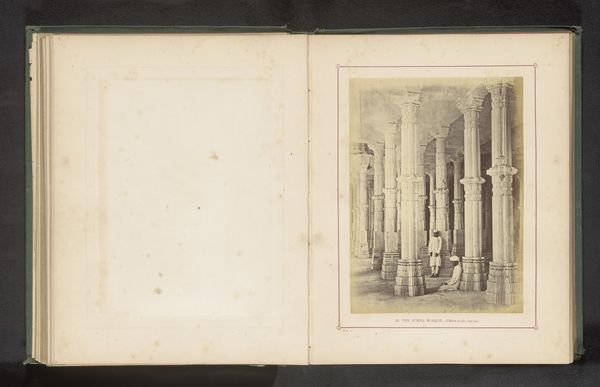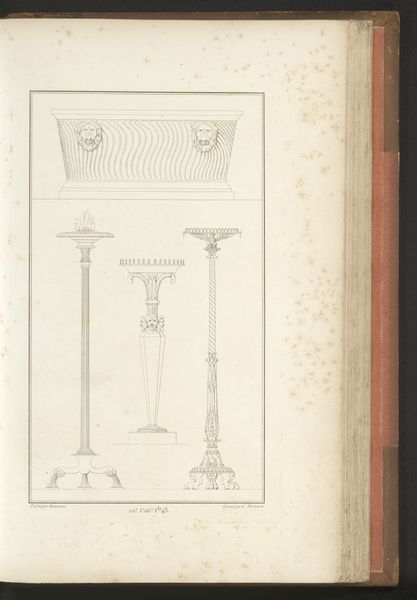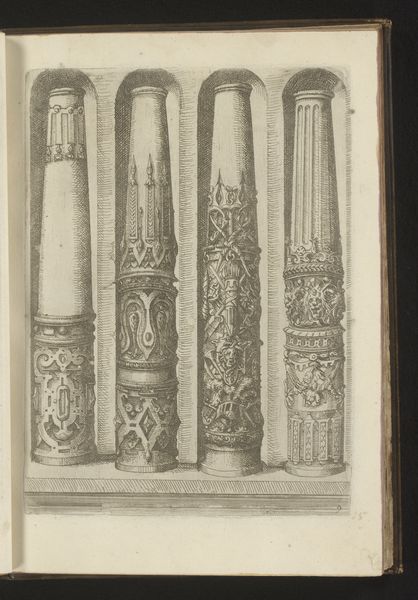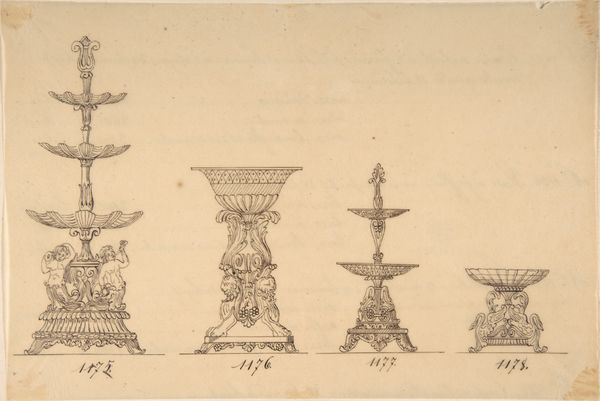
Vrijheid, Broederschap en Gelijkheid, decoratie op de Hogesluis, 1795 1795
0:00
0:00
drawing, print, paper, ink, engraving
#
drawing
#
neoclacissism
#
allegory
# print
#
paper
#
form
#
ink
#
geometric
#
line
#
cityscape
#
history-painting
#
engraving
Dimensions: height 98 mm, width 116 mm
Copyright: Rijks Museum: Open Domain
This print, made in 1795 by an anonymous artist, depicts decoration on the Hogesluis, and is made from simple ink on paper. The image, a clean and precise engraving, illustrates three columns, each topped with different symbols and named with the famous revolutionary slogan, "Freedom, Brotherhood, Equality." Notice the linear details of the columns, emphasizing a sense of order and structure, reflecting the Enlightenment values of reason and clarity. The print’s precise lines and controlled aesthetic suggest a belief in the power of design to communicate political ideals during a time of radical change and social transformation. The act of printing itself is a powerful form of production, enabling the widespread distribution of ideas and imagery. In this context, printmaking becomes a tool for disseminating revolutionary concepts, making them accessible to a broader audience. By considering the materials and processes behind this seemingly simple print, we gain a deeper understanding of its role in shaping cultural and political discourse.
Comments
No comments
Be the first to comment and join the conversation on the ultimate creative platform.
